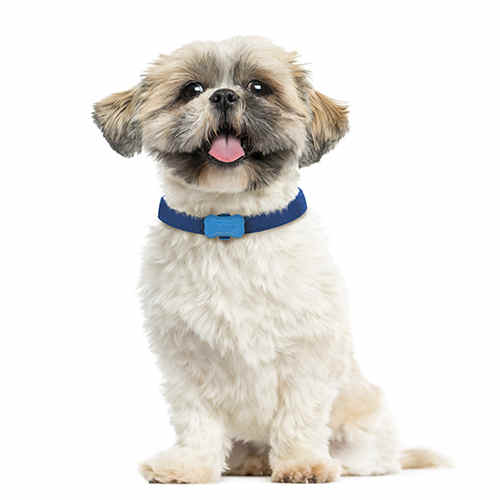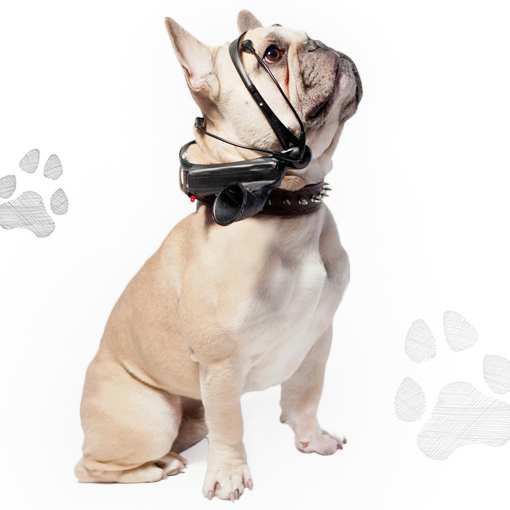Communications of the ACM
Wearables For Animals

Voyce, a wearable device that tracks a pet's movements, behavior patterns, heart rate, and respiration, is one of a number of wearable technologies entering the marketplace for animals.
Credit: i4c Innovations
This August, the company i4c Innovations plans to release Voyce, a wearable device that tracks movement, behavior patterns, heart rate, and respiration, then offers tips and suggestions based on the data gathered. The wearable space is a crowded one, so this new gadget wouldn’t appear to be all that unique, except for one little detail: Voyce is designed for dogs.
The boom in human-centric wearable fitness bands, along with health and wellness smartphone apps, has sparked the development of comparable technologies for pets. A company called Fitbark is developing a dog-activity monitor due for release later this year.

The startup Myfitdog is building paired gadgets, one for you and one for your pet, to bring owners and their best friends even closer. Scientists at the Georgia Institute of Technology are perfecting a sensor-packed vest that helps service dogs relay important messages. One group of researchers at the Nordic Society for Invention and Discovery, a small Scandinavian research lab, are even trying to develop a wearable headset, called No More Woof, that facilitates inter-species conversations.

These are no mere gimmicks: the research firm IDTechX recently estimated that the wearable electronics market for animals, including pets, livestock, and others, will reach $2.6 billion by 2025.
The technology in the livestock space is, predictably, more practical. Farms have long used RFID tags to track animals, but in recent years, devices called boluses have become more prevalent. When a cow swallows one of these battery-powered capsules – each of which has a thermometer, a microcontroller, and a transceiver - the device sinks to the bottom of one of its stomachs and remains there. Each time the cow passes a wireless receiver near the gate to its pen, the bolus relays data on the animal’s core temperature. "We identify the temperature threshold for each cow," says Stephen Weilnau, the CTO of bolus developer Bella Ag. "When the temperature goes outside of that for a significant period, we know there’s some type of issue."
The pet technology, on the other hand, is more about enhancing human-animal interaction. The Voyce device, which resembles a slightly oversized collar, includes an accelerometer that tracks a pet’s movements. This raw data is compared both to the pet’s baseline behavior and the expected patterns for its breed–a Golden Retriever is going to move around more than a preening lap dog. Owners will receive alerts if their pet is not active enough, relative to the standards for the breed and past behavior. The device factors in the weather, too. So, if your dog is moving less than average in the middle of an August heat wave, the app won’t urge you to rush to the park.
The smart collar also has a monitor that measures the expansion and contraction of arteries and the movement of muscles in the dog’s neck to infer heart rate and respiration. By tracking these health indicators, the device should be able to pick up early signs of illness. "It’s more than I’m putting an accelerometer on your dog to tell you how much your dog did today relative to yesterday," says i4c president Jeff Noce. "You’re going to be a more educated owner. Our whole goal is to help you understand your dog like never before."
At the College of Computing of the Georgia Institute of Technology, computer scientist Melody Moore Jackson and her team are trying to do the same for service dogs and their owners. With the Facilitating Interactions for Dogs with Occupations (FIDO) project, Jackson and colleagues have developed a range of wearable sensors that respond to dogs’ bites, tugs, gestures, and touches, then deliver specific warnings. For example, a hearing dog normally leads its owner to the source of a sound, such as a crying baby or a fire alarm. "But what if it’s a tornado siren?" Jackson asks. "The dog has no way of taking you to the source." With one of the FIDO sensors, though, the dog could learn to trigger specific alerts. Tugging on one sensor will prompt a text message warning the owner of that distant alarm, while activating another could alert them to the crying child.
Of course, some owners hope for even deeper communication. The Swedish research team behind the No More Woof headset hopes to translate EEG signals and barks into accurate, spoken expressions of a dog’s inner wishes. Experts are skeptical, but in theory, inter-species translation is not impossible, according to animal behavioral biologist Con Slobodchikoff of Northern Arizona University. Over several decades, Slobodchikoff and colleagues have deciphered numerous social and alarm calls among prairie dogs, and he now hopes to do the same for the common household canine. One of the many challenges will be figuring out how to understand and account for the dog’s body posture, an important form of canine communication, in addition to its barks. "We need to build a dictionary of dog sounds and dog movements," he explains. "We are more or less at the beginning stages of collecting this data."
While this sort of technology is still years away, Slobodchikoff and other experts say that wearable electronics like Voyce, Fitbark, or those under development at Myfitdog will offer real benefits in the short run. "It connects people with dogs much more," Slobodchikoff says. "If they know what their dog is doing, they will have a better sense of what their dog is about."
Gregory Mone is a Boston, MA-based writer and the author of the novel Dangerous Waters.
No entries found